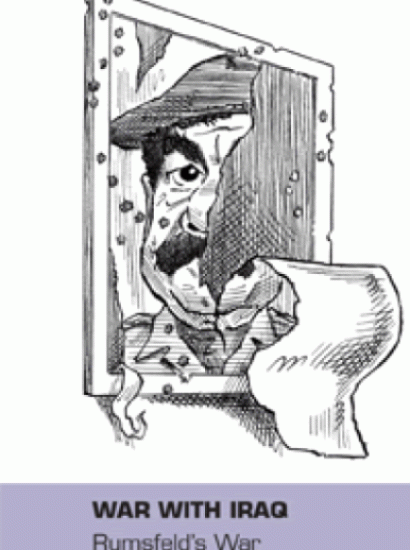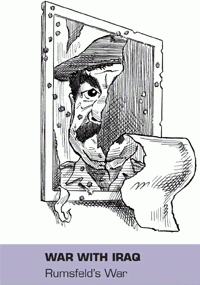- Security & Defense
- US Defense
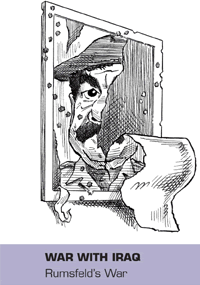
March 25 was probably the low point of Operation Iraqi Freedom. Coalition forces, which had rolled into Iraq against little resistance, began to pick up serious fire. And, to make matters worse, one of the biggest dust storms in memory immobilized the troops for two days. Many pundits, politicians, and retired generals started to claim the American war plan was ill conceived, half baked, and generally too risky.
The main complaint was that U.S. officials had supposedly failed to provide adequate forces for the mission. As a result, critics said, our lines were strung out too thin. Of course, the results eventually proved the critics wrong. After the dust storm cleared, U.S.-led forces got moving again and wrapped up the war in just three weeks. Casualties proved light. The fadayeen proved more a nuisance than a threat. By late April crowds were pulling down statues of Saddam throughout Iraq.
Clash of Cultures
Today it is hard even to understand what all the fuss was about. But knowledgeable observers knew that the controversy was not really just about the operations plan General Tommy Franks developed for Iraq. The critics were really attacking Defense Secretary Donald

Rumsfeld’s policy of “defense transformation.”
Rumsfeld has pushed for smaller, more agile forces that can respond faster to crises. The policy has not always gone down well with many officers and politicians wedded to the status quo, and when U.S. forces bogged down, they seized the opportunity to argue their point.
To understand the controversy over defense transformation, it helps to consider a little history. Since the ancient Greeks organized their soldiers into phalanxes 2,500 years ago, combatants who could keep themselves in well-ordered formations had a clear advantage over their opponents. They could protect one another and concentrate their fire to destroy a target.
Traditionally, such armies had two basic ways to defeat their adversaries. One was to deliver men and munitions to the front faster that the enemy could destroy them. Battles were then decided by simple, grisly mathematics. An attacker either overwhelmed its opponent—or ran out of forces. Military planners in the nineteenth and twentieth centuries even had a rule of thumb: An attacker needed half again as many forces as the defender if he hoped to win.
The other approach was to move faster than one’s opponent could. The goal was to hit the enemy at its weakest points so that sheer numbers were less important. If an army was fast enough, it might race around the end of its opponent’s line, turn the corner like a running back, and attack from the side, where the opponent could not shoot back effectively,
These principles—win by firepower or win by maneuver—changed little over two millennia. Armies—and the battlefields they fought on—just gradually grew in size as better tech- nology came along. Longer-ranged weapons (bows and arrows, catapults, artillery, and, later, guided missiles) allowed armies to fire deadlier rounds from greater distances. Later, mechanization (railroads, then trucks, tanks, and, eventually, airplanes) enabled them to move faster.
So a Roman army might number 2,500 men and advance along a front that was about a mile and half long. In the Civil War, when the Industrial Revolution was just beginning, 90,000 Union soldiers met 75,000 Confederates at Gettysburg along a front that was about three miles long, from Culp’s Hill in the north to Little Round Top in the south. When Confederate troops attacked in Pickett’s Charge, they ran out of soldiers before they could break through the Union line. That decided the battle—a classic case of attrition warfare. The Confederates lost 20,400 men killed, wounded, or captured over four days.
During the next hundred years, armies mechanized further and battlefields quickly became much larger. When the British tried to break through German lines at the Battle of the Somme in 1916, they sent 750,000 men advancing across a front about 15 miles across. Using the first primitive tanks, they gained about 10 miles before running out of steam—suffering 420,000 casualties over four and a half months.
By 1944, armies had better tanks and had adopted airplanes. So when the German and American armies fought the Battle of the Bulge, they lined up along a front that was about 90 miles long, extending from the middle of Belgium to the tip of Luxembourg. The “bulge”—the German penetration—was 20 miles deep.
Even during the Cold War, armies still planned to fight this way. The math even remained the same; most experts believed NATO would hold if the Warsaw Pact had no better than a 50 percent advantage. And one rule remained constant: Armies had to maintain a minimum “mass.” If they were stretched too thin, they could not defend themselves. Just as important, commanders wouldn’t be able to control their forces because communications would break down.
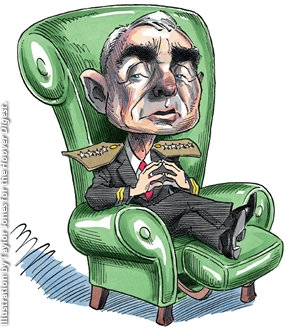
Much of the criticism of Franks’s war plan came from retired army generals. The most notable was Barry McCaffrey, who expressed his views in the Wall Street Journal and on NBC. McCaffrey used the formal, understated tones of a general—but his message was clear. He wrote, “The ‘rolling start’ concept of the attack dictated by Defense Secretary Donald Rumsfeld has put us in a temporarily risky position.” By military standards, that is a scathing attack; it accuses the secretary of defense of putting U.S. forces at risk by pushing a faulty strategy.
McCaffrey warned, “We face a war of maneuver in the coming days to destroy five Iraqi armored divisions,” with just one Marine infantry division and supporting units. He continued, “We should be fighting this battle with three U.S. armored divisions and an armored cavalry regiment to provide rear area security. We also have inadequate tube and rocket artillery to provide needed suppressive fires for the joint team.”
To be sure, McCaffrey believed that the superior training and professionalism of the Americans would prevail. But he cautioned, “If we shrink from using direct and overwhelming
“We are overextended and at risk. It is time to call up at least three U.S. Army National Guard Divisions for 36 months service along with significant Marine, Navy, Coast Guard and Air Force reserve elements,” he said. “Getting these reserve elements truly ready to fight is a six-month training challenge,” McCaffrey concluded. He had laid down his marker. In short, McCaffrey wanted to fight a completely different war—a traditional land campaign, taking as long as necessary to assemble an overwhelming force and then setting out in a single, synchronized, massive punch. This was the kind of war the Army had trained to fight in Europe during the Cold War and was mainly how it fought even as recently as Operation Desert Storm.
Events showed that McCaffrey was profoundly mistaken. The plan developed by Franks and urged on by Rumsfeld was hard to criticize in either form or implementation. Rather than the “thousands of casualties” McCaffrey predicted, U.S. and British forces suffered 159 combat deaths—tragic, of course, but a testimony to the effectiveness of the plan.
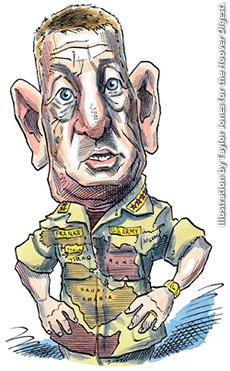
The Process of Military Reform
There is always tension between established military orthodoxy and reformers—both uniformed and civilian. Nonetheless, all military organizations have benefited from outside pressure. It was mavericks and outsiders that got armies to adopt tanks, navies to adopt dreadnoughts, and air forces to adopt unmanned vehicles. U.S. commanders were reluctant to adopt the “Left Hook” that outflanked Iraqi forces in 1991. It was civilians who rejected a head-on attack and pushed for options.
Today information technology is changing the traditional rules of warfare. It is less important for armies to concentrate firepower because modern weapons are so accurate. Just as important, during the past decade precision weapons have gotten cheaper. In Desert Storm, a jet-propelled cruise missile used two electronic guidance systems and cost about a million dollars. A less-complex laser-guided bomb might cost $50,000.
Today it is possible to make a smart bomb by combining a low-cost satellite guidance package with a conventional “dumb bomb” left over from the Korean or Vietnam War. The resulting weapon costs just $16,000. With precision weapons this cheap, American commanders hardly need to use anything but smart munitions.
Improvements in communications are at least as important as these improvements in weapons. Until the mid-1800s, the best technology was shouting, bugling, or messengers on foot or on horseback. In the Civil War, armies first used signal flags (wigwag) and telegraph. In the early 1900s radio came along; satellite communications arrived in the 1960s. Now, with cellular and fiber-optic networks growing like kudzu around the globe, it is possible to reach almost any aircraft, ship, or even a ground-pounding grunt reliably and instantly. Everyone can be stitched together by a communications grid that extends from the United States all the way into the enemy’s territory.
In fact, weapons are so deadly and communications so much better today that the rules are reversing themselves. Now armies have an incentive to spread out and conceal themselves so they are less vulnerable. Whoever happens to have a shot—aircraft, ship, or grunt—takes it and usually destroys its target instantly.
The trends are unmistakable and irresistible. The future of war lies with highly mobile, often stealthy forces running at the margins of endurance and linked with communications networks. Information technology is forcing all military organizations to adapt. Some armies are succeeding in making the change (for example, the Israelis and British). Others are struggling (for example, the French and Russians).
Even if we could fight wars in the traditional fashion—massing forces in set formation, as McCaffrey proposed—we wouldn’t want to. Traditional war—charging head-on into an enemy defense and hoping your unit has enough mass to overwhelm him—is incredibly costly and horrible. Americans today will not tolerate the casualties that accompany that kind of warfare. For that matter, they are reluctant to accept the moral responsibility for crushing our adversaries that way.
Network warfare is not antiseptic. But such agile networks can penetrate an enemy’s front lines and make precise, limited strikes at its weakest points, shortening the overall length of a war. This is the approach U.S. commanders used in Afghanistan and Iraq.
Traditional, wait-for-sufficient-mass warfare presents strategic and political costs, too. If American leaders wait until they have overwhelming force before resorting to military action, one could be sure that we would be much more constrained in taking any kind of military action at all. We would be unable to get the troops to the scene on time, and we could not count on having the kind of bases this strategy would require.
What is really troubling, though, is that terrorist groups such as Al Qaeda and rogue states have been so effective in this new form of warfare—especially if they target civilians or hide among noncombatants. Much of the new information technology is available to everyone. That’s why all military organizations are moving toward these network warfare tactics—as are terrorist organizations, as September 11 demonstrated.
Twenty years ago a command and control system combining satellite communications, cellular, and high-volume digital data links would cost millions of dollars. Now anyone with a credit card can rent one—by the minute. Which is exactly what Al Qaeda did. The next development in warfare may be a combination of these modern communications networks and tactics with chemical weapons, biological agents, or “dirty bombs,” designed to contaminate areas with radioactive material.
To deal with these new threats, all U.S. military organizations will need to adapt. Operation Iraqi Freedom was just one example of how they can.









